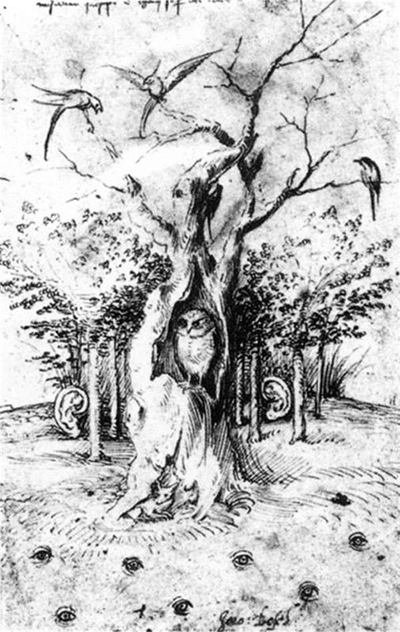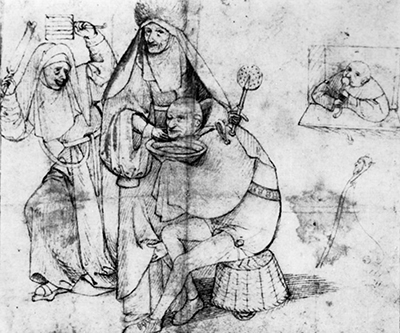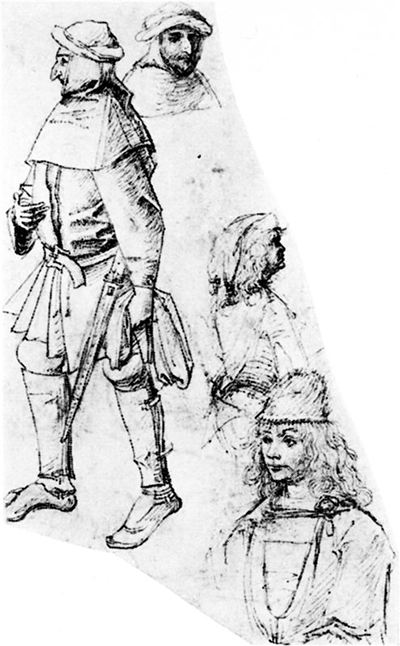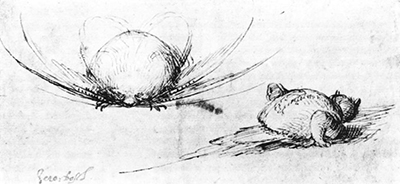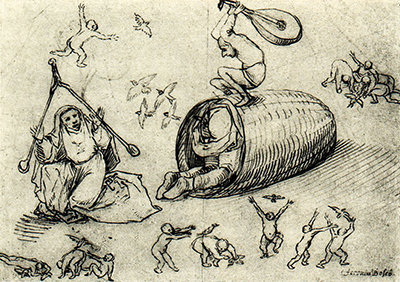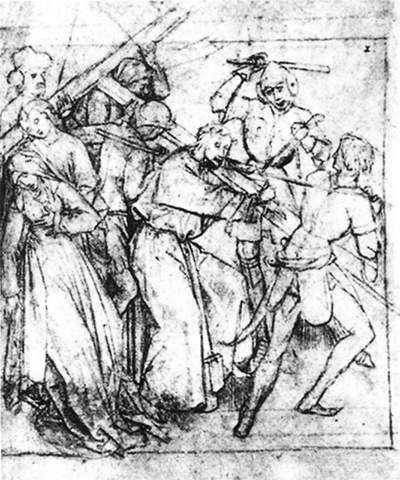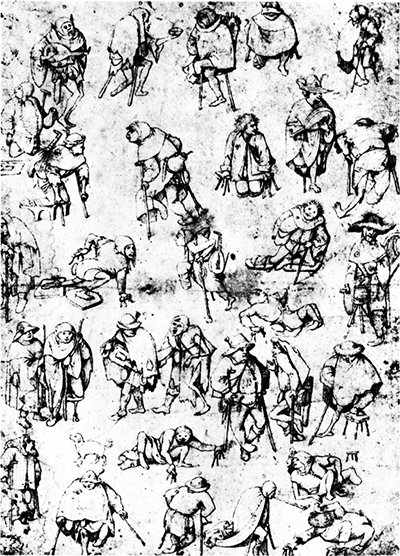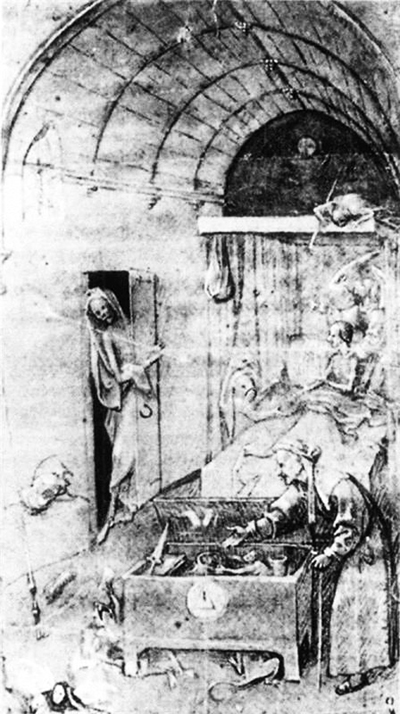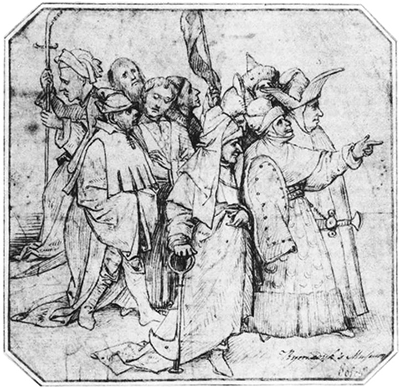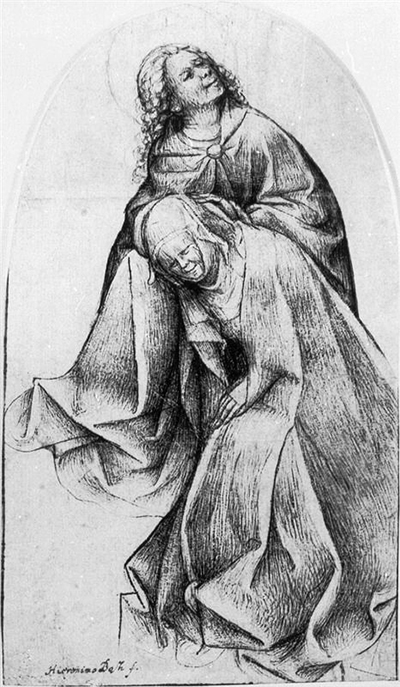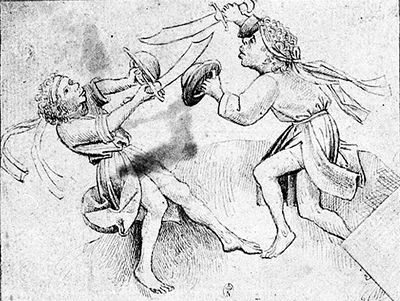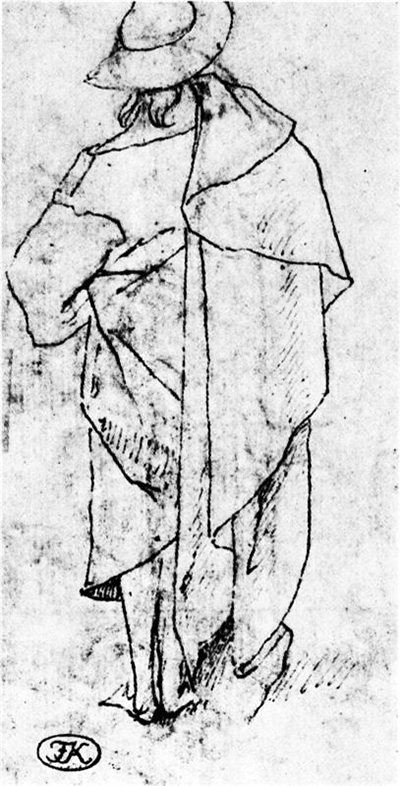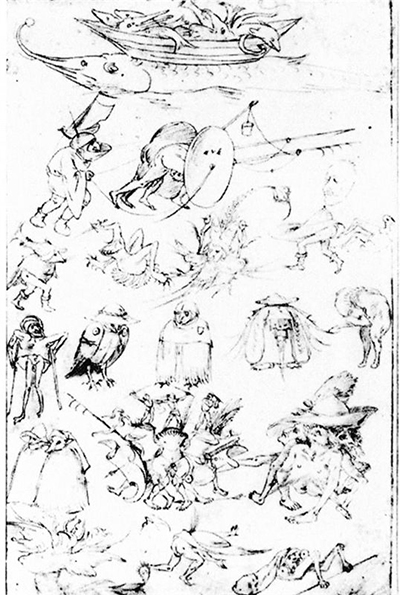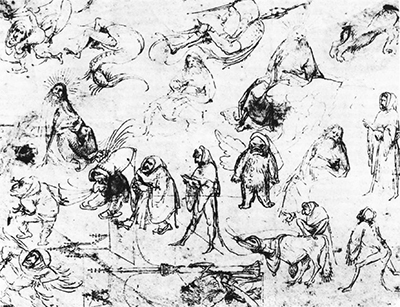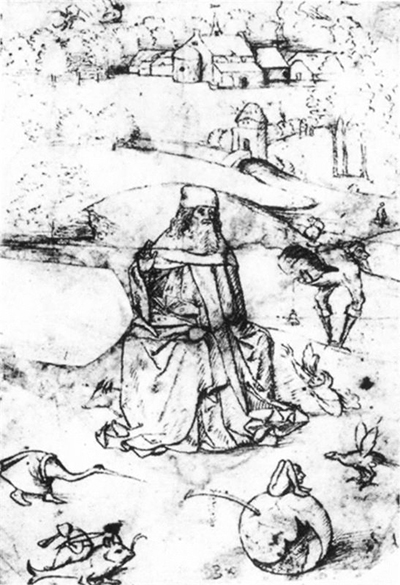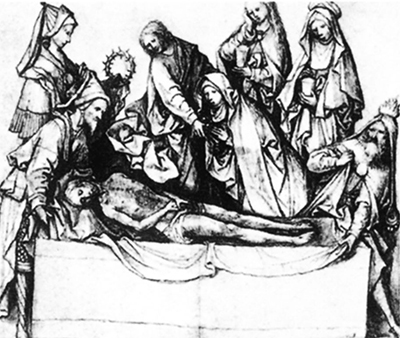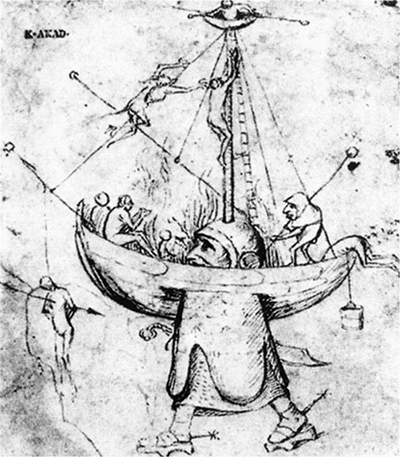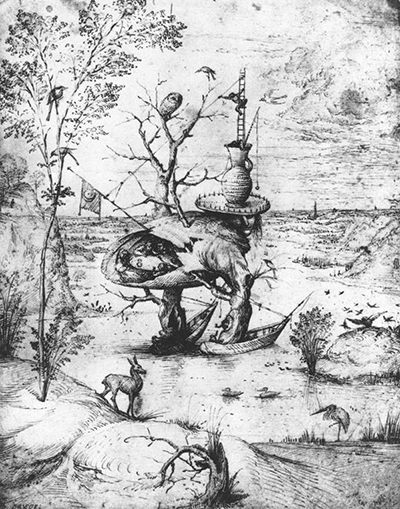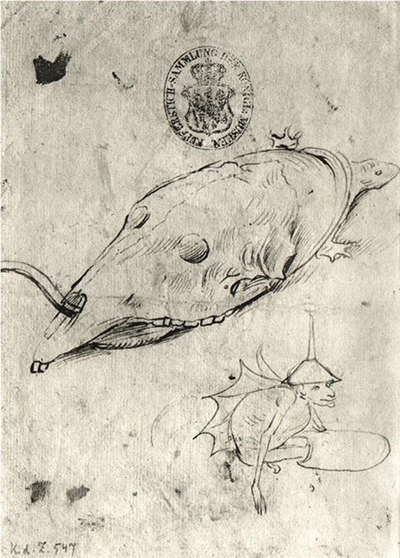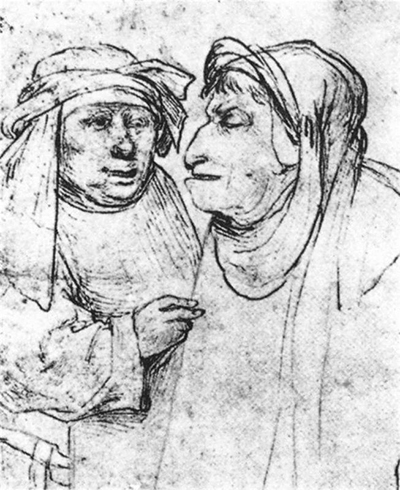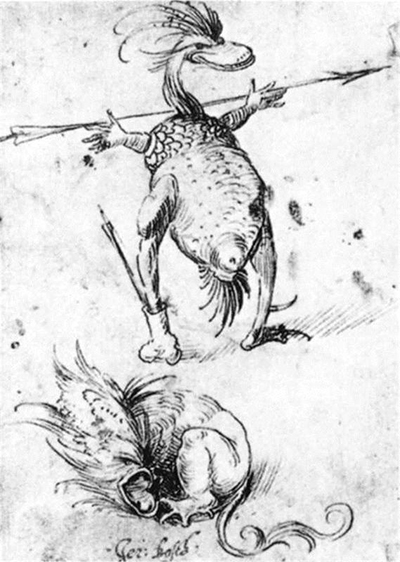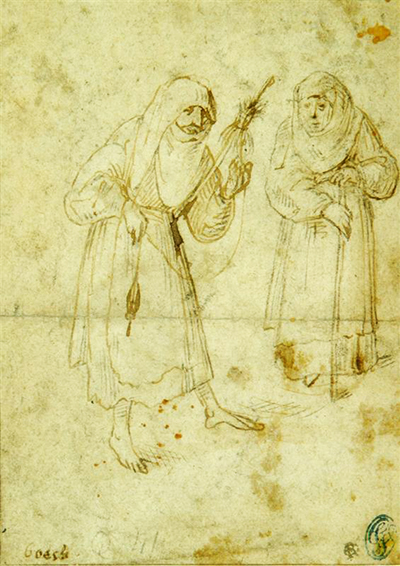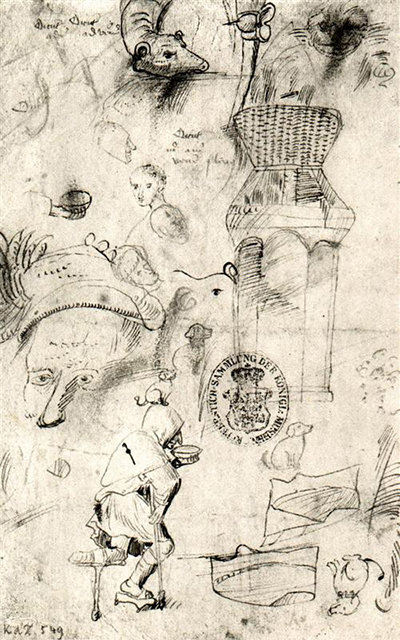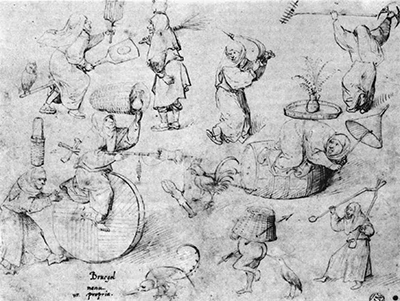The charming detail used in Hieronymus Bosch's famous paintings was perhaps their most memorable quality and behind those artworks were endless study drawings where his inventive mind came to life
Introduction
Artists from the period of Bosch all have issues with attribution. Simply put, there was little documentation at the time for even their most significant oil paintings, and almost nothing for study drawings. At that time, these masters of their art were simply concentrating on developing their skills and had little thought for art historians who five hundred years later would be trying to pick the bones out of a limited trail of information. Hieronymus Bosch was famously quoted as saying, "...For poor is the mind that always uses the ideas of others and invents none of its own..." whilst producing his sketch titled The Wood has Ears, The Field Eyes. That drawing is shown in this page on the left. You can also learn more about The Wood has Ears here. Hieronymus Bosch's most famous painting is unquestionably his masterpiece of The Garden of Earthly Delights. There are several study drawings remaining which are directly attributable to this particular artwork, each concentrating on individual elements of this highly complex composition.
Bosch's Grotesque Creatures
We can understand from these drawings that some of the extraordinary, grotesque creatures were designed over time and not merely invented from the artist's imagination spontaneously.The Renaissance and Baroque art movements were dominated by famous artists who were aided by significant numbers of highly trained assistant artists from their own respective studios. This has made accurate attribution even more difficult to achieve, with many of Bosch's drawings being confirmed as partly his, partly his studio's. Those questions are unlikely to ever be completed explained due to the centuries that have passed since the likes of Hieronymus Bosch dominated the art scene. Bosch, clearly, was not the only significant draughtsman of the Renaissance and Baroque eras. These were classically trained artists who were skilled in different mediums and always passionate about finding new avenues for their creativity and invention. Bosch's drawings are addressed at times more as a second thought, a desire to learn more about his incredible paintings. Others from this era have become respected in the field of drawing independantly, ignoring their great achievements in frescos, sculptures or architectural drawings.
Related Draughtsmen
The finest draughtsman during this period were Leonardo da Vinci, Michelangelo and Raphael. These three dominated the Renaissance across all of the mediums in which they were each involved. There were also other key contributions from Peter Paul Rubens, Albrecht Durer and Diego Velazquez.The career of Hieronymus Bosch has been roughly categorised by art historians as being his early works between 1470–1485, his middle period 1485–1500, and then the later period of 1500 until his death. This general classification has been appled ever since to not just his oil paintings, but also his work in other mediums too. There are around 40-50 drawings currently attributed directly to artist Bosch, with countless more connected loosely to members of his studio or followers. Several drawings, such as one that includes a hellish landscape, have been attributed to this artist having originally been considered part of his circle. There has been advancements in research which has enabled experts to confidently make such decisions.
Bosch Research Groups
Matthijs Ilsink from Noordbrabants plus members of the Bosch Research and Conservation Project are considered some of the most knowledgeable on this artist's career and perhaps the best qualified in deciding where to add or remove attributions. They would also have played a role in constructing a supreme Bosch exhbition in 2016 at the Noordbrabants Museum which offered an incredibly rare opportunity to view many of his paintings together. Bosch was an artist who placed extraordinary detail into most of his paintings, and in order to achieve a consistently high level of artistic quality, study sketches were essential. Those that remain are listed in this section, but are surely just a small fraction of the overall number that he would have produced during his own lifetime. The fragile nature of such a medium means many will inevitably be lost, damaged or simply fail to be recognised as of the particular artist's hand. You may also notice that many drawings from the old masters will rarely be put out on display in order to best protect them, often viewable by appointment only, where as the paintings will be on permanent display within a highly accessible, prominent part of each museum or gallery.
Bosch's Drawing Genres
Many of the drawings found here are portrait pieces, often featuring several individuals together. Figurative work is amongst the hardest to achieve accurately and requires a great deal of practice, even for great masters like Hieronymus Bosch. Sketching also allowed the opportunity to experiment with different poses and facial expressions, rather than trying to amend directly on the canvas or panel which would require much more work. Many of these portraits were of grotesque figures for which the artist would become famous. His imagination would come to the fore on paper, using pen and ink, with ideas expressed and developed prior to being added to the final painting. Many did not make it, and so his expressive work was more finetuned and amended than some realised, and it was never the case that Bosch simply worked directly on panels without any prior plan. Works on paper have always enabled us to better understand an artist's methods of production, and is even more so that case with older artists, where other documentation is harder to find - see how few quotes from his career have been uncovered, for example.
Collating Bosch's Drawings
There has been considerable effort in researching and collating Bosch's drawings over the centuries that have passed since he first dominated the Northern Renaissance. There is, however, relatively little information on each one, forcing them to explain their background and artistic qualities directly. Many are clearly related to later paintings, making their role in his career self-explanatory. Others have little more than an approximate date and description of the medium used. There has been an added complication in that Bosch has a successful studio who he trained to work in a similar manner. As a result, many drawings have since been linked more to members of his workshop rather than the master himself, though the connection can often be very hard to determine, one way or the other. The situation has also be worsened by our limited knowledge of the other members of his studio, making it even harder to confidently differentiate their work. Drawings tend to offer the smallest amount of clues, because of their relative simplicity, where as paintings feature a great number of techniques that can then be brought back to a specific creator.



